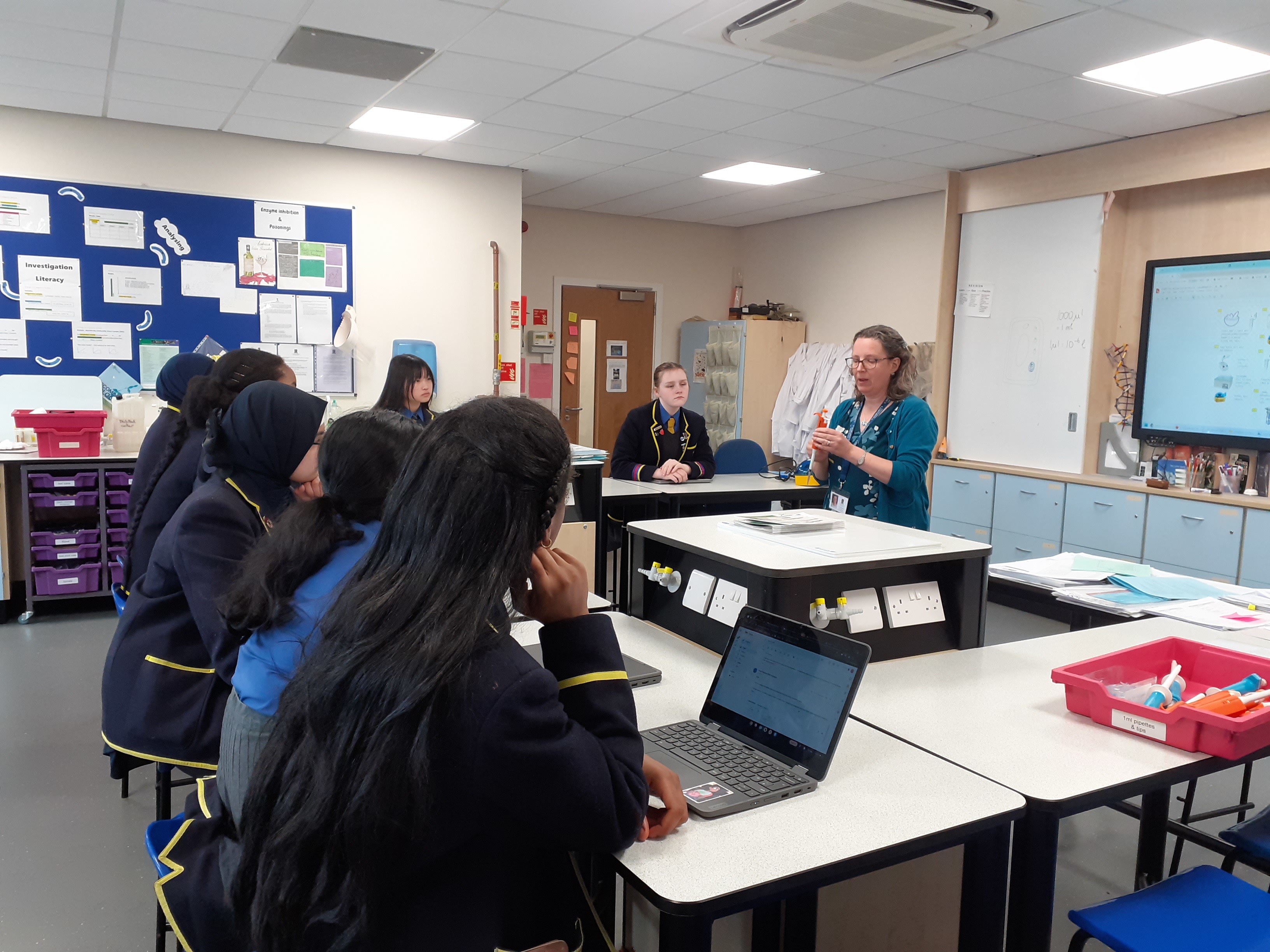
Every science teacher dreams of lighting that spark: the moment when students don lab coats, roll up their sleeves, and dive into real-world scientific discovery. At St Margaret’s, that dream came spectacularly to life thanks to the Daffodil DNA Project, a thrilling collaboration made possible through a prestigious Royal Society Partnership Grant.
It all started with a curious question from a teacher at Beaulieu Convent School in Jersey, and quickly blossomed into a nationwide scientific adventure. Schools from across the UK have joined forces with the University of Dundee and the James Hutton Institute to map the chloroplast genomes of heritage daffodil cultivars. Our mission? To uncover the genetic stories behind daffodils like Sempre Avanti and Ducat, gifted to us by the Botanic Gardens in Dundee, and trace their evolutionary roots: ground-breaking work not yet done, as most genetic studies are carried out in crop plants.
In autumn 2023, we secured funding, and by spring 2024, our daffodils were pushing through the soil. That’s when our intrepid “Team Daff” was born, a dedicated group of young scientists who met weekly to master everything from chlorophyll chromatography to DNA extraction and micropipetting with exacting precision.
Under the expert guidance of Dr Ali Roberts, a plant cell biologist at the James Hutton Institute, our team took part in a captivating lab session exploring plant pigments and their microscopic mysteries. And the excitement didn’t stop there. We were treated to a mind-blowing trip to the Institute itself, where cutting-edge microscopes revealed plant cells in 3D motion, and DNA sequencers from historical to next-generation came to life before our eyes.
Our students put on an inspirational school assembly, passionately sharing their experiences and discoveries. It was clear: science wasn’t just something they learned about. It was something they were doing.
As autumn 2024 rolled in so did our equipment, and with it, another season of scientific adventure. We became seasoned pros at chloroplast and DNA extraction, but a low DNA yield meant our nanopore sequencer couldn’t do its magic just yet. Setbacks are part of the journey and a powerful reminder that science is full of twists, turns, and valuable lessons in perseverance.
March 2025 brought fresh growth and our DaffLab Day. New faces joined the fold, eager to get hands-on. We welcomed genomics experts Drs Liz and Ewan Campbell from the University of Aberdeen, whose drainpipe-and-coloured-balls demo of DNA sequencing brought the process to life. With their help, and after many rounds of pipetting, centrifuging, and gel electrophoresis, we loaded our nanopore flow cell once again. Thirty hours later, our data was sent off to the University of Dundee’s supercomputers and we soon heard that a complete chloroplast chromosome was successfully assembled: an extraordinary achievement that had our young scientists glowing with pride.
“The reward of the young scientist is the emotional thrill of being the first person in the history of the world to see something or to understand something.” Cecilia Payne-Gaposchkin
With DNA from our second cultivar sequenced and awaiting analysis, the journey is far from over. The data we’ve helped collect will be added to the European Nucleotide Archive, contributing to global research efforts, and potentially enabling our pupils to be co-authors in published scientific journals.
We are so grateful to have had the opportunity to meet the ambitions of the Royal Society Partnership Grant to build long-lasting STEM partnerships and offer once-in-a-lifetime learning opportunities. And with an invitation to apply for the Royal Society Summer Science Exhibition’s Young Researcher Zone on the horizon, the future looks brighter than ever.